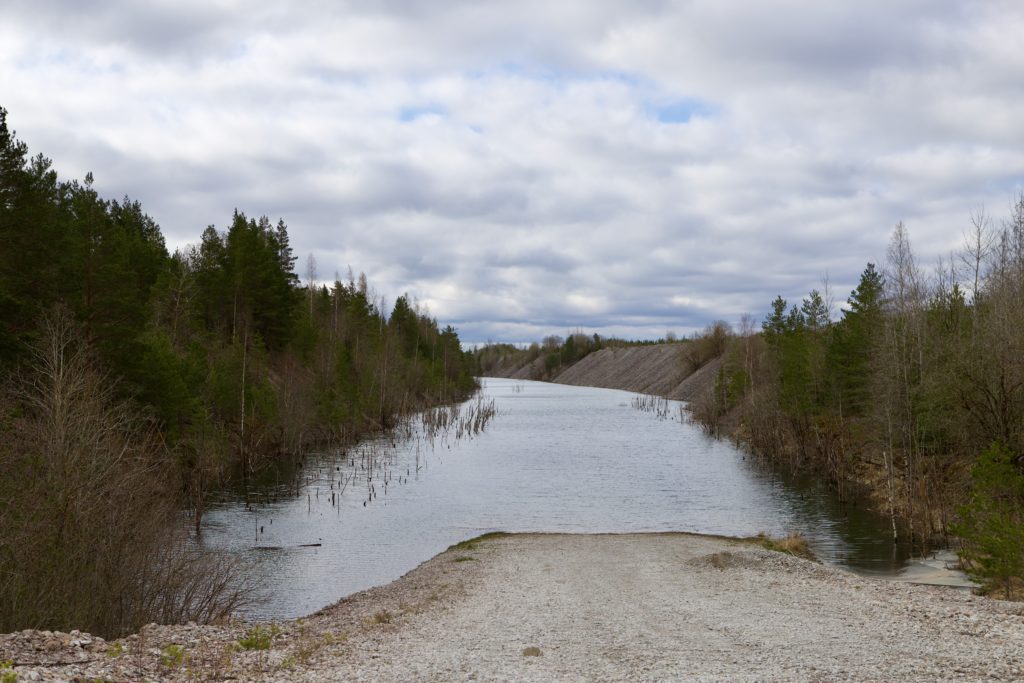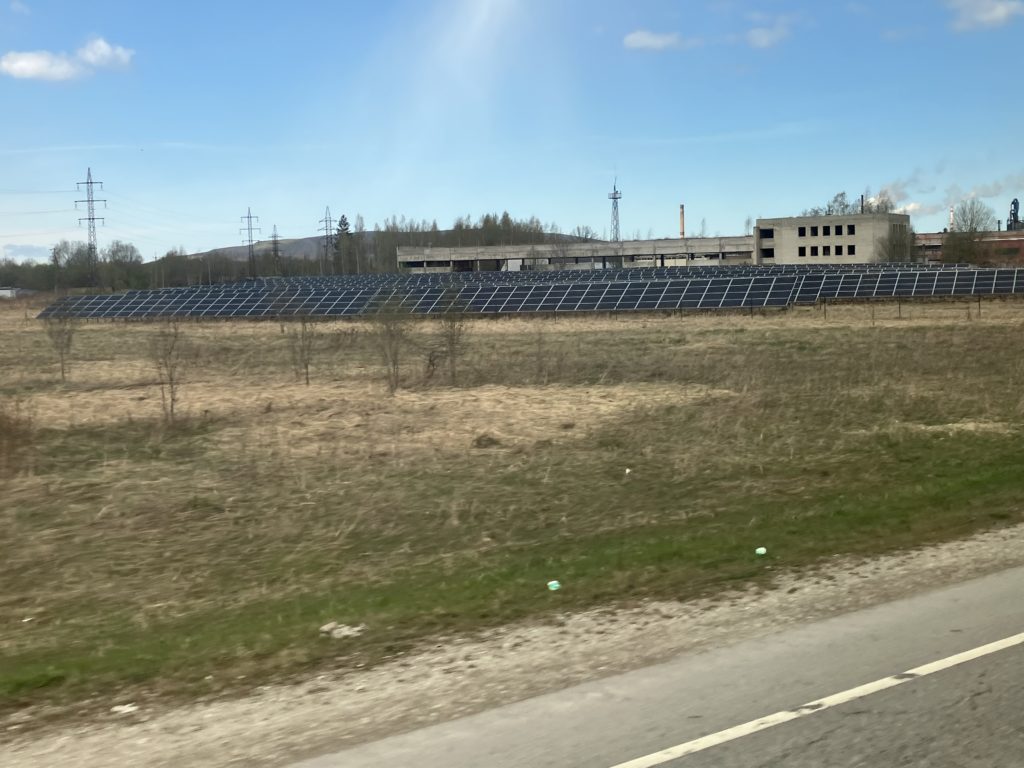Post-Extractivist Landscapes and the Renewable Future

Image Credit: Scars of oil shale mining at Ida Viru © Katherine Fama 2023
The recent Pre-Institute meeting for the ‘Post-Extractivist Legacies and Landscapes’ project, hosted by Tallinn University explored the specific histories and lasting impacts of non-renewable resource extraction both in a national context (i.e., oil shale in Estonia)[1] and internationally (e.g., the petrochemical industry and intertwined colonial legacies in the Gulf Coast and Haiti; peat extraction and mining in Ireland; gold mining in South Africa; mining legacies and administration in Central Asia; and coal and other forms of extraction in the former German Democratic Republic).[2] Particularly instructive were the guided site visits included in the programme, which revealed the physical scars left in the landscape of Ida-Virumaa by oil shale mining, and provided insight into the place occupied by this industry in (post-)socialist cultural imaginations. Discussions before and during the site visits also touched on the continued reliance of Estonia on oil shale, amidst a fragmented transition to renewable forms of energy that has been largely put on hold to ensure energy independence and security in the short term.[3] Uncertainty around this transition directly impacts local communities, shaping lives and landscapes and economic realities all at the same time.[4]
Despite the continued dominance of oil shale in Estonian energy production, I was struck by signs of a burgeoning renewable energy industry in Ida-Virumaa, for example fields of solar panels and clusters of wind turbines. There appear to be immediate links between this ‘renewable future’ and the non-renewable past and present; for example, in recent years the Balti Power Plant (near Narva) has extended its operations to include a wind farm built on top of a closed ash field.[5] The plant continues to extract energy from oil shale, placing the two forms of energy production in an unlikely partnership as they drive development of the region while helping Estonia meet its national energy demands. Perhaps the most evident sign of a (tentative) move towards renewable energy was the fact that several projects remained under construction: in a cluster of wind turbines passed during our site visit, the majority of installations were in motion while a single turbine was still missing its blades.

It was evident from our encounter(s) with extractivist landscapes in Estonia, in which the scars of oil shale mining appeared side-by-side with novel technologies to sustain the country’s energy needs in a post-carbon future, that every form of energy production can – or should – be considered a form of extractivism. Even if the source of energy is renewable, there can be no question that the means of production (including siting, infrastructure, and the organisation of labour) alter the landscape and impact on nearby communities. The effective juxtaposition of energy production from fossil fuels and renewable energy, in places such as the Balti Power Plant as well as outside of Estonia, demands that we ask potentially uncomfortable questions: to what extent does the transition towards renewable forms of energy herald the genesis of future post-extractivist landscapes? And by extension, how can we critically examine new forms of energy production and their impact on the landscape and local communities, to ensure sustainable uses of the natural environment and a socially just transition?
These and other questions were already teased out during some of the conversations at the Pre-Institute meeting, for example when Joseph Campana and Sophie Sapp Moore confirmed the importance of arts- and community-based responses to the past and present of energy production in a given area (taking into account also the often complex local histories of industrial capitalism and related post-colonial forms of extraction). This can help us drive towards forms of regeneration where we “imagine futures otherwise”.[6] We would like to continue these conversations during the Main Institute in Dublin in July, including as part of the panel discussion ‘Future Post-Extractivist Landscapes? Critical and cultural approaches to historical energy extraction and the future of renewables’ convened by Dr. Treasa de Loughry and myself. We hope to see many of you there.
– TOMAS BUITENDIJK, University College Dublin
References
“Electricity and Heat Production.” Eesti Energia. Accessed May 11, 2023. https://www.energia.ee/en/ettevottest/tehnoloogia/elektri-ja-sooja-tootmine.
Moore, Sophie Sapp. “From Extraction to Regeneration: Houston and the Gulf Coast.” (presentation, Pre-Institute Meeting Post-extractivist Legacies and Landscapes: Humanities, Artistic and Activist Responses, Tallinn University, Estonia, April 28, 2023).
Kesküla, Eeva. “The Impact of Decarbonisation Policies and the Closing of the Estonian Oil Shale Industry: an Anthropological Perspective.” (presentation, Pre-Institute Meeting Post-extractivist Legacies and Landscapes: Humanities, Artistic and Activist Responses, Tallinn University, Estonia, April 28, 2023).
Printsmann, Anu. “A Geographer’s Autoethnography on Landscapes of Brown Gold.” (presentation, Pre-Institute Meeting Post-extractivist Legacies and Landscapes: Humanities, Artistic and Activist Responses, Tallinn University, Estonia, April 28, 2023).
[1] Discussed by Eeva Kesküla, John Grzinich and Anu Printsmann; and further explored through a series of guided site visits in the Ida-Virumaa mining region of Estonia.
[2] As featured, respectively, in presentations by Joseph Campana, Sophie Sapp Moore, Judy Carroll Deeley, Pat Deeley, Keith Breckenridge, Faeeza Ballim, Rano Turaeva, Magdalena Taube and Daniel Kötter.
[3] Kesküla, “The impact of decarbonisation policies”
[4] Kesküla, “The impact of decarbonisation policies”; Printsmann, “A geographer’s autoethnography”
[5] “Electricity and Heat Production”
[6] Moore, “From Extraction to Regeneration”